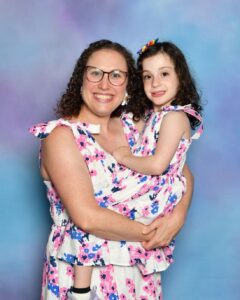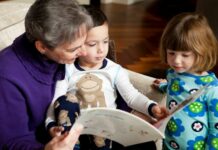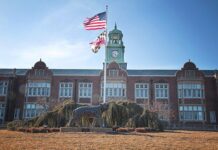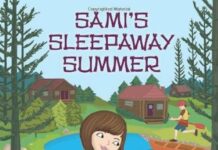
Amanda Rudin has lived in the Baltimore area since 2008, when she came to study special education at Towson University. She got her start in the education field interning at the Center for Jewish Education in 2010 and working as a student teacher in Baltimore County Public Schools starting in 2011.
Rudin continued working at BCPS as a special education teacher until 2015, when she moved to the Kennedy Krieger Institute to work as an education specialist. Rudin also volunteers as a community connector for the PJ Library, doing outreach for single parents in the community and helping form relationships among them.
Rudin lives in Towson.
What do you do at the Kennedy Krieger Institute?
I work in an inpatient pediatric rehab setting, and the majority of the patients I follow are patients who have had a brain injury or a spinal cord injury. So, of course, these are children who have had a significant event that more than likely qualifies them for special education. I assist these children, young adults, with getting back to school and ensuring that they have accommodations. Usually, that’s in the form of an IEP or a 504 [plan]. I also do some educational testing as part of the inpatient rehab stay, and I work with a multidisciplinary team. I work with the therapists, I work with the psychologists and the medical doctors to ensure that all the recommendations get from our inpatient rehab setting back to the folks at school.
What do you do as volunteer for PJ Library?
I try to host an event about every quarter, and I am constantly reaching out to single moms or single parents and trying to build a meaningful connection with them. I think that single parents can kind of fall into a lot of buckets as far as different communities. If you live in Pikesville, you have a Pikesville community; if you live in Towson, you have a Towson community; if your kid goes to Baltimore Hebrew, you have the Baltimore Hebrew community. But I think that it’s also really important not to overlook that these parents also have another identity as a single parent, and they have some specific needs. And I think that one of those needs is just having other people in their life and opportunities to engage with other people that have similar backgrounds.
What got you interested in special education?
I had the opportunity to work in Baltimore County Public Schools and also at a nonpublic special education school. And during that time, I realized that I was really passionate about ensuring that students get what they need and are served appropriately in the school system. And I eventually decided to sidestep that classroom teacher trajectory, and I ended up working on inpatient rehab. So, my background is really in working with kids with autism. I recently — I would say in the last two or three years — pivoted to working with children and young adults with brain injuries. So, it’s been very humbling getting to learn a new kind of niche area of special education.
What has being a PJ Library connector meant to you?
I was a little apprehensive about becoming a connector, having a demanding job, and I have other responsibilities, and I have a child. But I quickly realized that these individuals that I’m connecting with, I wanted to connect with anyways. … I wanted my daughter to be able to see that every family looks a little different … and just be able to be around other children that have similar experiences to her. I definitely am thankful that I have the opportunity to expose not only my child but also to cultivate these relationships. I like to think that, as these kids are getting older, we’re also exposing them to these relationships and fostering these communities.
What does your Jewish identity look like in your day-to-day life?
I think that being a Jewish person and just being a good person are kind of synonymous, and I think that I just try to be a good person at work and be a good person in the community. I think that it’s just important to meet people where they are and try to build relationships. And I think that one relationship at a time, we’re building community, whether it’s in the workplace, whether it’s with patients in schools or my work as a connector. It’s also just building relationships with community members and connecting them with other families.




